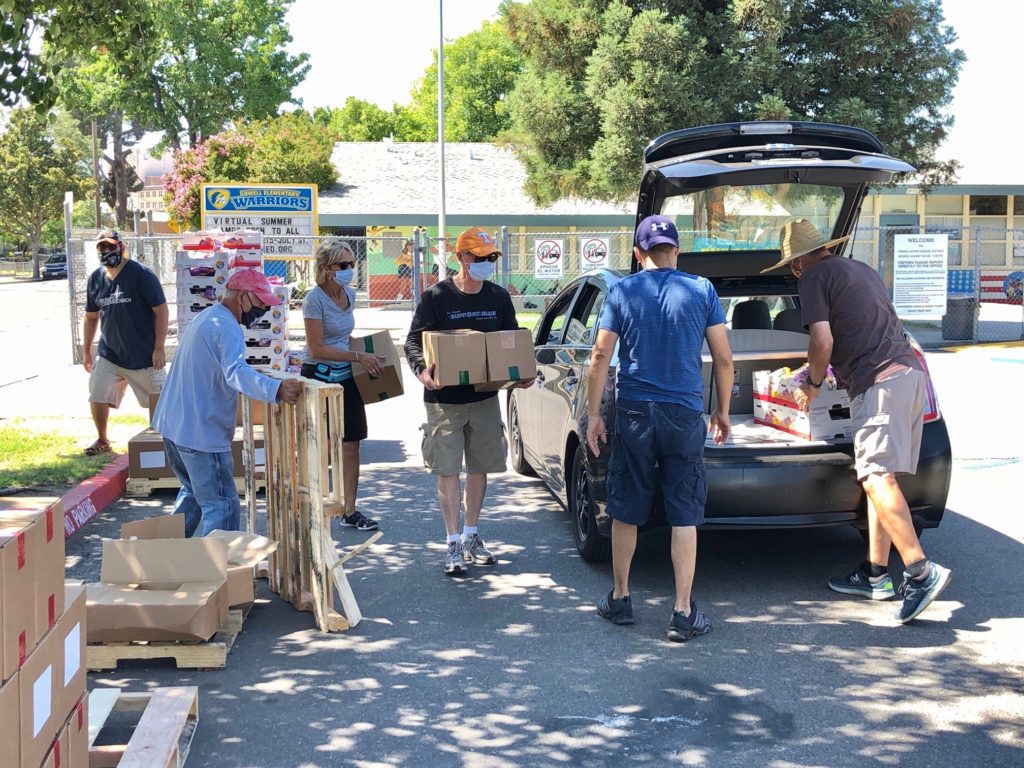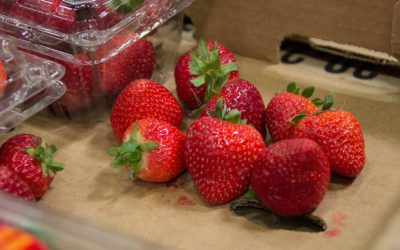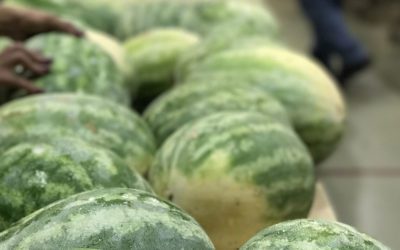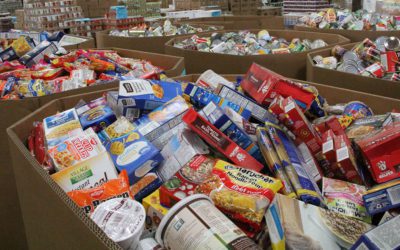Supplementing Meals While Students Are Home
Written by Alicia Linares, Grant Manager
As plans for reopening schools change frequently, we remain both eager and flexible to continue feeding children in the best capacity we can. Our children’s hunger relief programs have been adapted in response to the pandemic. As schools closed, we had to suspend our traditional BackPack programming; however, we quickly collaborated with school districts to coordinate emergency food box distributions on school campuses for students and their families throughout the summer. Our School Food Distribution program aims to meet the food needs of children living in low-income and rural areas who face difficulty in accessing enough food while school is not physically in session, and whose food security has been worsened by the economic fallout of COVID-19.
Our School Food Distribution program currently serves 3,550 children per month at 32 school sites. The food boxes provided contain a variety of foods suitable for children and their families, such as pancake mix, corn flakes cereal, shelf-stable milk, apple sauce, canned fruits and vegetables, beans, rice, canned chicken breast, and various skillet dinner box kits (i.e. hamburger helper.) These foods will provide much-needed nutritional support to children as they spend more time at home while schools administer distance learning. Each food box contains approximately 13 pounds of food, the equivalent to more than 10 meals.
Nearly three-quarters of children in our service area rely on meals and snacks provided at school, but struggle to get enough food to eat while school is not in session. This gap has been intensified as COVID-19 caused schools to close for in-person instruction and transition to at-home learning models. Even as plans for the instructional format of the upcoming school year remain ever-changing, we know that children will be home more often than before. Many families are facing difficulty in meeting their household’s increased food needs, especially if there has been a job loss or decrease in wages. Our School Food Distribution program is targeted toward students and families struggling to fill this food gap by providing food boxes at school sites in communities with concentrated poverty and food insecurity.
Children, who are experiencing rapid brain growth and development, are most intensely affected by hunger. Childhood hunger has serious long-term effects on physical, cognitive, social, and emotional development. Research shows that children suffering from sustained hunger experience more social and behavioral problems because they do not feel well, do not have sufficient energy for complex social interactions, and cannot adapt as well to stress in their environment. Whether at home or at school, children should not have to worry about food; they need access to nutritious foods so they can continue learning and succeeding wherever they are.
Our School Food Distribution program will continue serving students at school sites into the upcoming school year whether instruction is held on-campus or virtually. We are working in close collaboration with local school districts, while carefully following all state and locally mandated guidelines, in planning how to best implement and adapt our child hunger programs as the crisis continues to unfold.



